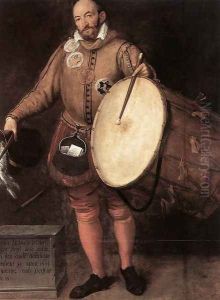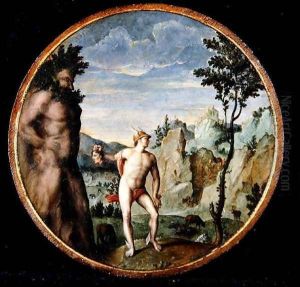Gillis Congnet Paintings
Gillis Congnet, also known as Aegidius Congnet, was a Flemish Renaissance painter whose life and work were primarily associated with Antwerp, where he was active during the second half of the 16th century. He is thought to have been born around 1538, although the exact date and place of his birth are not well-documented.
Congnet's artistic training and early influences remain somewhat obscure, but he is believed to have been a pupil of the painter Cornelis van Dalem. He became a master in the Antwerp Guild of Saint Luke, the city's painters' guild, in 1561. His work is characterized by meticulous attention to detail and a penchant for rich, vivid colors—hallmarks of the Northern Renaissance.
Congnet's career unfolded during a tumultuous period in the history of the Low Countries, marked by the struggle for independence from Spanish rule and the religious conflicts between Catholics and Protestants. Despite the political and religious upheavals of the time, Antwerp remained a vibrant center for the arts and commerce, and Congnet's paintings reflect both the influence of Italian Renaissance art and the distinct qualities of Northern European painting.
His surviving oeuvre includes religious subjects, portraits, and mythological scenes. Some of his most notable works are altarpieces, which were commissioned for churches and private devotion. Congnet's style evolved over his career, incorporating Mannerist elements that were becoming fashionable in the latter part of the 16th century, such as elongated figures and complex compositions.
Unfortunately, much of Congnet's life and work remain shrouded in mystery, and only a limited number of his paintings have been firmly attributed to him. His precise influence on contemporaries and subsequent generations of artists is difficult to gauge, but he is recognized as a significant figure in the Antwerp art scene of his time.
Gillis Congnet died in 1599 in Antwerp. While he may not be as widely known as some of his contemporaries, his work provides valuable insight into the artistic and cultural milieu of the late Renaissance in the Flemish region.

